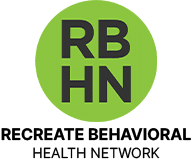According to research, more than 60% of people who relapse after addiction treatment request medication-assisted treatment if they know it is available.[1] MAT is an approach that includes medication and behavioral therapy to treat addiction.[2] Relapse rates for people who do not use MAT tend to be higher. A study showed that 90% relapsed within a year, 65% relapsed within a month and more than 25% relapsed within the first day of completing initial treatment without MAT.[1]
Medication-assisted treatment is commonly used for opiates, which are highly addictive. This is an essential consideration in New Jersey since heroin is a common drug people misuse. According to 2020 reports from the state, more than 40% of addiction treatment admissions were for people using heroin.[3] About 7% of admissions were for people using other opiates. MAT is also used for alcohol addiction or other forms of addiction. In New Jersey, alcohol addiction accounted for 32% of treatment facility admissions in 2020.[3]
What Are the Goals of MAT?
The key goal of MAT is to help a person remain in recovery. Clinicians use MAT to prevent the likelihood of relapse, and they understand that the “cold turkey” method of completely stopping substances can be more harmful than helpful in many cases. These are the goals of medication-assisted treatment:
- Balance brain chemistry
- Remove euphoric effects
- Reduce substance cravings
- Stabilize bodily functions

A person undergoing detoxification and initial addiction treatment for a substance with high abuse potential may experience unpleasant side effects. For example, if a person tries to detox alone without clinical support or MAT, the individual may feel nauseous. It is common to feel chills, shaking, irritability, and other unpleasant symptoms. Since the person’s brain chemistry is also imbalanced because of the substance, cravings tend to be stronger.[4] The combination of unpleasant side effects and intense cravings is sometimes enough to push a person to relapse into substance abuse. One of the dangers of this quick relapse is a potential overdose. People often take larger doses when they relapse to ease the severe symptoms.
How Does Medication-Assisted Treatment Work?
The functions of MAT achieve the goals mentioned in the previous section. Clinicians recommend a type of substance to substitute for the substance a patient was misusing. Addiction treatment professionals combine behavioral therapy with appropriate medication for each person.[5] Depending on the individual’s needs, the use of medications may be temporary, long-term, or permanent. How long a MAT treatment program lasts may also depend on the person’s addiction history, relapse risk, drug type, and more.
In behavioral therapy, professionals may use a variety of approaches. They typically use cognitive behavioral therapy to help people discover why they use substances. Also, some clinicians may uncover an underlying mental health issue or a history of trauma. By addressing the cause of behaviors or triggers, they improve and land effective treatment outcomes. Professionals teach patients strategies for dealing with triggers, coping with life, and avoiding relapse. They also recommend participation in 12-step meetings or similar support groups after people finish initial treatment or detox.
Medications Used in MAT
Medication substitution is often started during detox. During this time, professionals administer different medications while a person stops using the substance that was being misused. There may also be supportive medications that professionals use. For instance, a person experiencing anxiety or panic attacks may be given medications to treat those symptoms. Also, some people may receive other medications to treat side effects like temporary diarrhea.[6]
Opioid MAT Medications
The approved medications by the FDA for opioid MAT are limited.[2] These are the primary forms of medications used for medication-assisted treatment for opioids:
- Naltrexone
- Methadone
- Buprenorphine
- Naloxone
There are several variations of the top three drugs in the previous list. The variant names may be based on the administration route. For instance, there are injections, buccal, sublingual, and other options for some.
Naloxone(Suboxone) is a nasal spray that people can easily obtain from the pharmacy. It reverses the effects of opioids immediately, which makes it a valuable aid in preventing opioid overdose incidents that may otherwise result in overdose deaths. According to the Food and Drug Administration, the other three medications are safe to use if a professional administers them and supervises the person taking them. Also, the FDA recommends a supportive behavioral therapy plan with these medications.[2]
People who use opioids such as heroin and prescription pain relievers including morphine, hydrocodone, oxycodone and others, experience an activation of brain receptors that create euphoric feelings and block pain. These opioids are called opioid agonists. Opioid antagonists are substances that block those effects, and many of the MAT drugs used as a treatment of opioid use disorder, opioid dependence, and addiction are antagonists. However, some are partial agonists, producing a smaller but similar effect to heroin or prescription opioids. Antagonists help reduce cravings and opioid withdrawal symptoms.[6]

Alcohol MAT Medications
These are some of the medications used in MAT for alcohol use disorder:
- Naltrexone
- Disulfiram
- Acamprosate
Disulfiram is designed to create unpleasant side effects if a person consumes alcohol while taking it. The medication will produce the same effects if a person is already intoxicated and consumes it. Acamprosate can help reduce cravings. It usually takes about eight days to reach its full effect, and people often begin taking it several days after they stop consuming alcohol.[7] It does not treat or prevent any symptoms of withdrawal. Naltrexone is a medication that may also be used for opioid treatment programs. It prevents euphoric feelings, and that action can help people addicted to alcohol stop drinking. Naltrexone study results have always been beleaguered by low adherence to the medication and poor retention in treatment.
The Role of Medication-Assisted Treatment in Detox
During detox, professionals may use MAT to help reduce cravings, prevent relapse or prevent some withdrawal symptoms. Without MAT, some people may find detox too challenging to handle. A doctor assesses each person to determine which medication is proper if MAT is used. Maintaining medication-assisted treatment after detox may also be beneficial for some people to reduce the chances of relapsing. Without MAT, some people may relapse multiple times.[8]
What Is the Difference Between Medication-Assisted Treatment and Medication-Based Treatment?
The two terms are used to describe the same treatment option. One reason why there is some confusion as to which term is correct is that there are professionals who use them both. While some professionals prefer to use medication-assisted treatment as the primary term, others believe medication-based treatment, or MBT, is more appropriate.[9] When you contact an addiction treatment facility to discuss the treatment plan, the people will know what you are talking about when you use either of the terms.
Benefits of Medication-Assisted Treatment
Research shows that MAT may be safer than treatment programs without medication in some cases.[10] These are some additional benefits:
- Improves chances of staying in recovery.
- Reduces recidivism or crime risks.
- Improves cognitive function and social abilities.
- Reduces risks of transferring infectious diseases.
Sometimes, it may be a more cost-effective alternative to treatment without MAT. For example, if a person goes through MAT the first time and does not relapse, the long-term costs of treatment are lower. However, if that person goes through multiple substance use disorder relapses and treatment programs without MAT, the long-term costs are higher. As people relapse more, they may also be more likely to give up and stop trying to go back to detox or rehab. Because of its many potential benefits, professionals are using MAT more often.
Outcomes of MAT
The outcome of treatment depends on each person and many individual factors. However, research shows that MAT programs tend to produce favorable results. For example, one study showed that over three years, more than 60% of people who went through a MAT program for opioid addiction did not consume substances during the past month. More than 90% no longer relied on opioids.[11] The study also found that MAT was especially helpful in maintaining sobriety for people with co-occurring mental health issues.

Finding Medication-Assisted Treatment for Addiction in New Jersey
If you or someone you know is struggling with addiction, there is help. You may have heard about how unpleasant detox was for someone who tried to do it alone. Fortunately, detox does not have to be dangerous or uncomfortable with professionals and a modern facility. Garden State Detox offers opioid and alcohol detox programs that fit individual needs. We also offer residential treatment, alcohol treatment, individual counseling, and therapy through telehealth. Our goal is to help people find the support they need and learn the keys to beating the cycle of addiction. To learn more about medication-assisted treatment for addiction in New Jersey, please get in touch with us.
FAQ
What does assisted medication mean?
References
- [1] https://www.ncbi.nlm.nih.gov/pmc/articles/PMC4874241/
- [2] https://www.fda.gov/drugs/information-drug-class/information-about-medication-assisted-treatment-mat
- [3] https://www.nj.gov/humanservices/dmhas/publications/statistical/Substance%20Abuse%20Overview/2020/Statewide.pdf
- [4] https://www.healthline.com/health/opioid-withdrawal/quitting-cold-turkey
- [5] https://www.samhsa.gov/medication-assisted-treatment
- [6] https://www.ncbi.nlm.nih.gov/pmc/articles/PMC3202507/
- [7] https://www.samhsa.gov/medication-assisted-treatment/medications-counseling-related-conditions
- [8] https://www.ncbi.nlm.nih.gov/books/NBK402343/
- [9] https://www.cdc.gov/niosh/docs/wp-solutions/2019-133/pdfs/2019-133.pdf
- [10] https://pcssnow.org/resource/benefits-medication-assisted-treatment/
- [11] https://archives.drugabuse.gov/news-events/nida-notes/2015/11/long-term-follow-up-medication-assisted-treatment-addiction-to-pain-relievers-yields-cause-optimism


